construction-construct
closeAt first glance, there is a feeling of déjà vu.
The objects take us back to the bodily experience we have inherited from the streets, and to the visual vocabulary attained from our daily routines in the city. With a second look, the decipherable features of these elements give way to a set of configurations that disrupt their normal “behaviours”. Steel beams swirl on the floor, with a seemingly animalistic temperament1; copper tubes meander through imaginary circuits, undergoing numerous deviations from the routes that would ensure greater effectiveness2; security gates float aery in mid-air, slowly swinging and revolving3; stainless steel handrails are contorted4 and guardrails twitch5. Such standardised elements have acquired unique sculptural qualities, which not only obstruct their original uses, but also emancipate them from the orderly physical and conceptual grids that they are obliged to obey. The original objects were initially designed, calculated and fabricated to fulfil specific roles as a part of wider structures, networks and systems. Their shapes follow pre-defined functions and are fine-tuned in relation to wider spatial hierarchies, rules and purposes. As such, they are intended to fulfil structural or infrastructural roles, to act as mediating devices between citizens and their urban surroundings, or to prevent certain “deviant” and “uncivil” behaviours. In these and other ways, these components not only make up the physical constitution of the city, but also contribute to the materialisation and maintenance of a certain order within it.
Espacio Relativo. Rafa Munárriz, Caniche Editorial, Madrid, Spain, 2019. Photos by Roberto Ruiz.
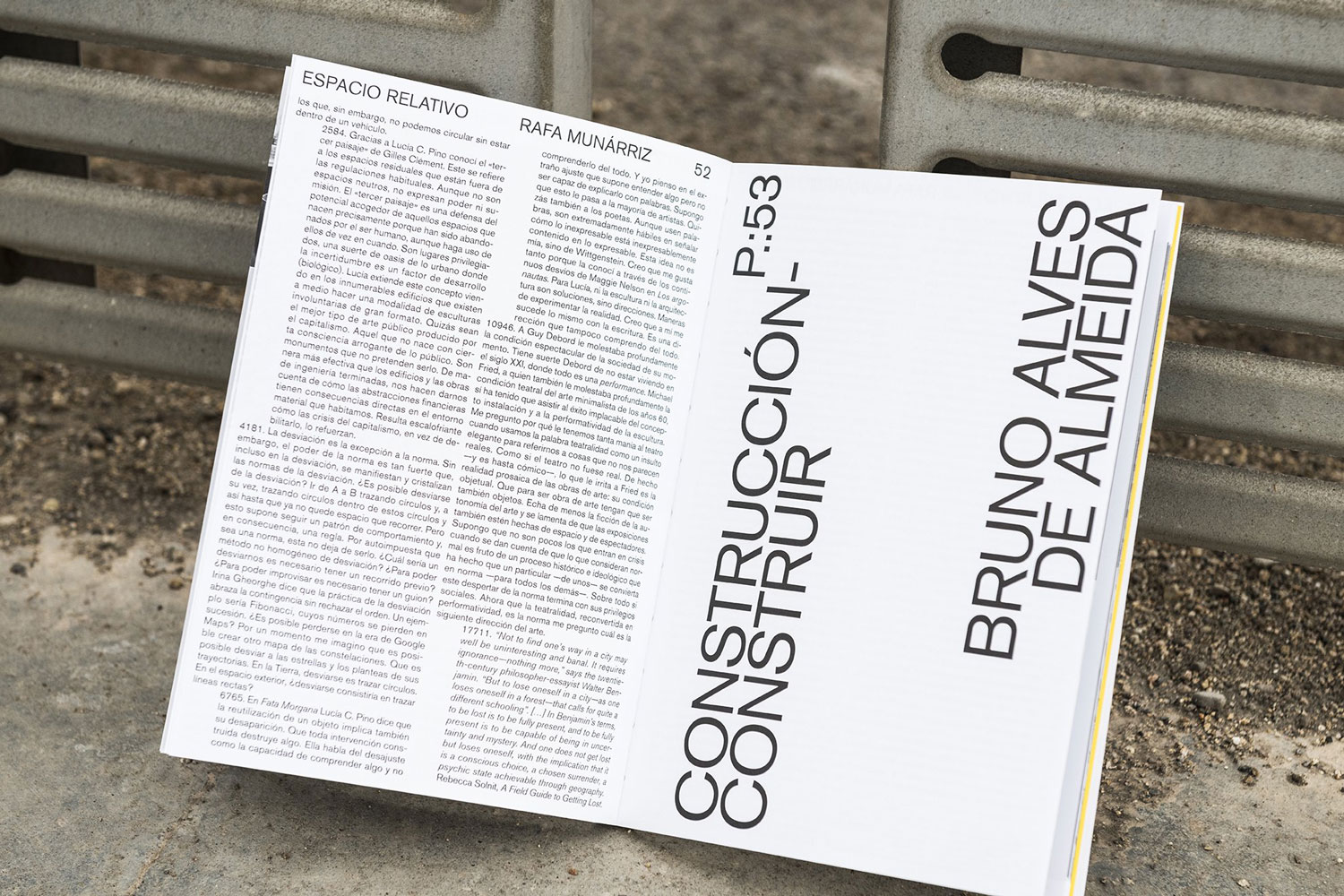
The sculptural characteristics that these pre-fabricated and standardised items have acquired are not the outcome of chance or contingency, but have been crafted as part of Rafa Munárriz’s artistic research. Through succinct procedures the artist accentuates characteristics that contradict the initial purposes of such objects but, paradoxically, that seem to have always belonged to them. The “unveiling” of these “concealed” behaviours is a way through which Munárriz can bring about a new corporeality to these pieces, putting them in a state that transcends mere “thingness” and consequently produce other effects in-between materiality, space and meaning. The artist’s predilection for architectural components and elements that structure our urban space, seem to point to a particular interest in the agency of these devices in the shaping of the bodies, habits and subjectivities of urban dwellers. The “material turn” taking place within the social sciences, humanities and arts pose fundamental questions about the agency of “things”, what they do, how they relate to each other and to us and how this interrelation should be analysed. Some theories defend that “things” are more than just stable and objective matter, being in fact mediatory, transitive and in constant entanglement with both humans and non-human agents.6 Therefore, not only does materiality take on social meanings, but also social agency is enacted and shaped through materiality. When translating these concepts into the scale of the city, one could say that the built environment is not only the tangible translation of social organisations into spatial form, but also a powerful agent in shaping society through the sorting and ordering of people and their activities and subjectivities.
Rafa Munárriz, Espacio Relativo, Exhibition view, Sala De Arte Joven, Madrid, Spain, 2019. Photo Roberto Ruiz.
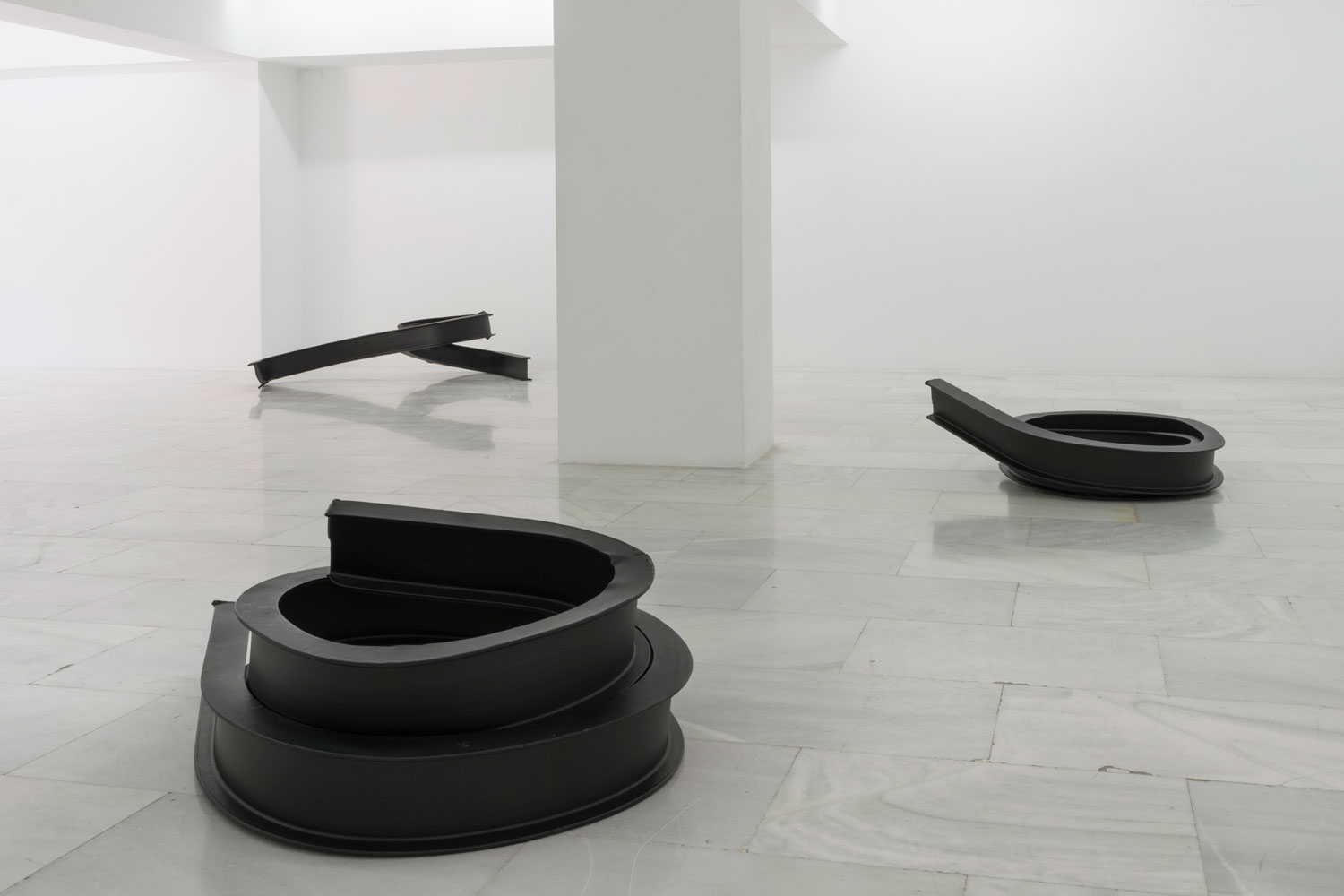
Society can only evolve as a simultaneous ordering and articulation of space. The elaboration of the built environment, however haphazard, precarious and based on accident, rather than purpose and intention, originally, seems to be a necessary condition for the build-up of any stable social order. The gradual build-up of a social system must go hand in hand with the gradual build-up of an artificial spatial order. Social order therefore requires spatial order. The social process needs the built environment as a plane of inscription, where it can leave traces that then serve to build up and stabilize social structures that then in turn allow a further elaboration of more complex social processes.7
The understanding of the complex interrelation between space and society has been gaining more depth since the 70s when philosopher and sociologist Henri Lefebvre acknowledged, in the book The Production of Space, that one of the key problems with studies of space is that spatial practice is understood as the “projection” of the social onto the spatial field. Lefebvre suggests instead that this relation is two-way, that space also has an impact on the social: “Space and the political organization of space express social relationships but also react back upon them.”8 Thus, spaces simultaneously structure actions and are the outcome of actions. In addition, political geographer and urban theorist Edward Soja describes Lefebvre’s theory as the “fundamental notion of the socio-spatial dialectic: that social and spatial relations are dialectically interreactive, interdependent; it is not then simply that space is socially produced, but also that social relations are spatially produced”.9 Such notion of “space” is not understood as a definable, bounded entity, but rather as a fluid product of culture, a construct built off of relations, which are primarily dictated by social and cultural means.
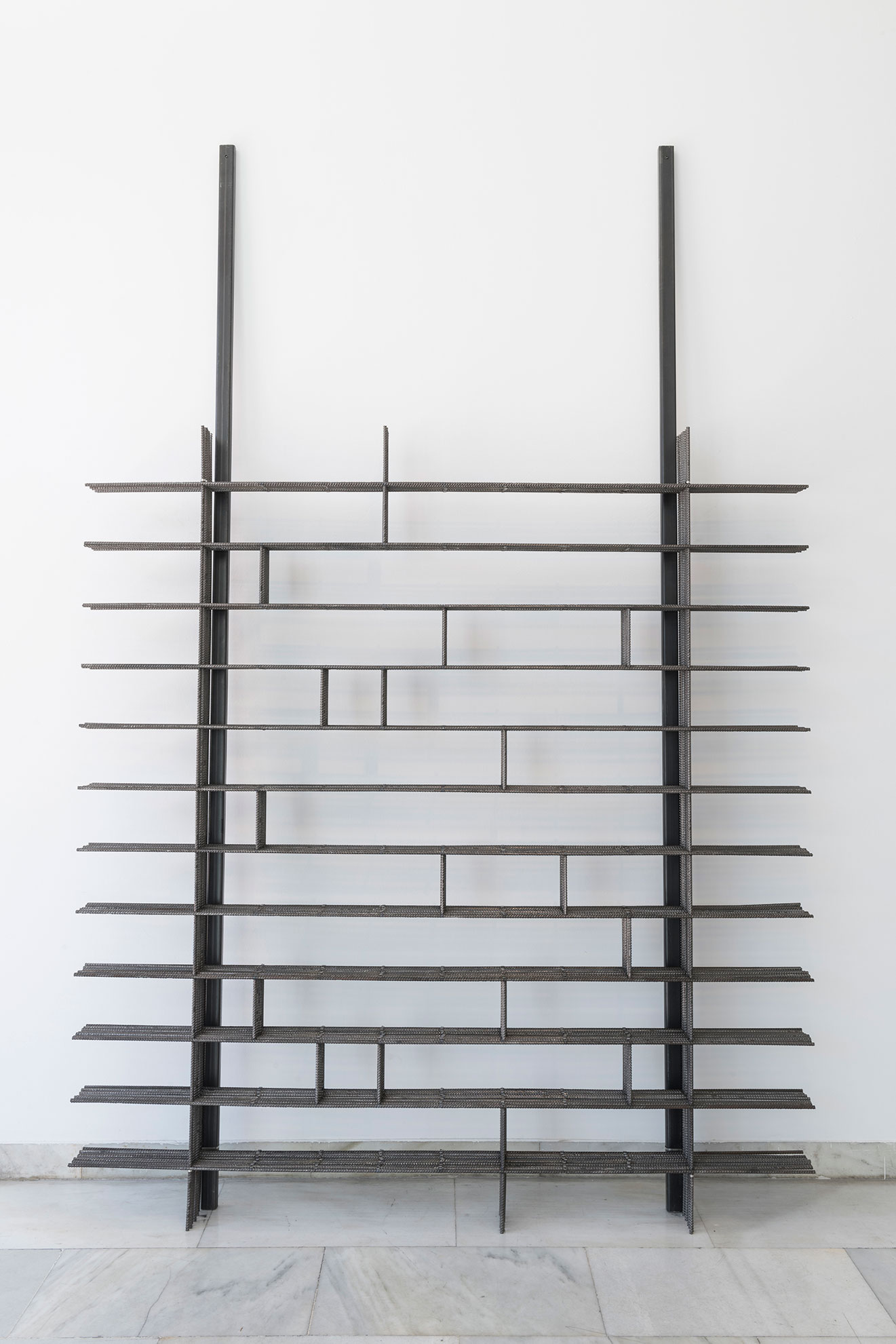
Not only did Lefebvre defend the deep correlation between space and the social, but also fostered the idea that space is ideological because, on the one hand, it reproduces prevailing social relations, contradictions and conflicts and, on the other hand, it is used as a “medium” through which hegemonic forces contain such contradictions and conflicts.10 Sociologist Manuel Castells expanded upon the inseparability of such societal dynamics from spatial configurations:
It has been a custom in the recent literature of urban studies to use the formula according to which space is the expression of society. Although such a perspective is a healthy reaction against the technological determinism and the short-sighted emphasis too frequently predominant in the space-related disciplines, it is clearly an insufficient formulation of the problem… Space is not a ‘reflection of society’, it is society… one of its fundamental material dimensions… Therefore, spatial forms, at least on our planet, will be produced, as all other objects are, by human action. They will express and perform the interests of the dominant class according to a given mode of production and to a specific mode of development. They will express and implement the power relationships of the state in an historically defined society. They will be realized and shaped by the process of gender domination and by state-enforced family life. At the same time, spatial forms will be earmarked by the resistance from exploited classes, from oppressed subjects, and from dominated women. And the work of such a contradictory historical process on the space will be accomplished on an already inherited spatial form, the product of former history and the support of new interests, projects, protests and dreams. Finally, from time to time, social movements will arise to challenge the meaning of spatial structure and therefore to attempt new functions and new forms.11
The political dimension of space that arises from the play of forces between hegemonic powers and the disruptive vectors against them, is further elaborated by urban theorist Mustafa Dikeç:
... space is not “political” in a univocal sense, and it is as much about inauguration of politics as it is of its containment; it is as much about openings as it is about closings; it is as much ruptural as it is governmental. Systems of governance and domination consolidate or impose orders of space (and time). Space is political in the sense that it generates a peculiar relationship to the order of things as a medium, it makes manifest the partitionings of the established order, and it provides a domain of experience for the constitution of political identities.12
The reciprocity between social order and spatial order and the interrelation between socio-cultural constructs with material structures, finds in urban space their ultimate site of expression. In immense metropolises, such as São Paulo, Brazil, where Rafa Munárriz has lived between 2013 and 2018, these correlations and their socio-political implications become even more perceptible and inseparable from the experience of living in the city. This is not only a consequence of the sheer size and of the great social complexities of this metropolis, but also the aftermath of a peculiar urbanisation process in Brazil, which was shaped by a number of features that were still rooted in the country’s historical formation dating back to the colonial period. Although the specificity of Brazil's urbanisation is beyond the scope of this text, it is important to mention the entrenched patriarchate; the predominance of patrimonialist social practices (i.e. the custom of treating public interests as if they were private); the universalisation of the “politics-of-favour” and the privatisation of the public sphere, as some of the characteristics that turned Brazil’s urbanisation into a process that was (and still is) highly based on income concentration and socio-spatial segregation. Segregation is the form of social exclusion and domination that has a spatial dimension and, according to architect and urban theorist Flávio Villaça, no aspect of the Brazilian urban space can ever be grasped without considering the specificities of its social and economic segregation and without acknowledging the role of urban segregation in the production of social inequality and domination.13

The spatial dimension that is intrinsic to such social, economic and ideological segregation is deeply intertwined with the established official discourses and with a set of public values and norms that are put in place in order to organise and assist the city’s daily life. Such codes of conduct result in spatial modes of organisation that range from a micro scale where, for example, they are embodied in elements whose presence conditions the free transit and agency of citizens, to a macro-scale, where, for instance, they contribute to the constitution of a fragmented urban tissue composed by fortified and private enclaves. Such areas are physically demarcated, isolated, turned inward and protected from the heterogeneity and unpredictability of the “open streets”, cultivating a relationship of rupture and denial with the rest of the city. Inside these territories, social “differences are not to be overlooked, taken as irrelevant, or left unattended” nor “disguised to sustain ideologies of universal equality or of peaceful cultural pluralism”,14 instead, many fortified enclaves confer social status to their inhabitants through the assertion of social distance and inequality. Thus, the effects of these and other spatial devices and strategies go far beyond social order or safety. They not only have great physical impact on the bodily relation between citizens and their urban environment, but also a cognitive one, ideologically reinforcing particular urban subjectivities around who has the right to inhabit, define and utilise certain aspects of the urban spatiality. Day-by-day, painstakingly, these apparatuses are not only shaping the form and fluxes of the cities but also the self-image and civic consciousness of its citizens.
Rafa Munárriz, Espacio Relativo, Exhibition view, Sala De Arte Joven, Madrid, Spain, 2019. Photo Roberto Ruiz.
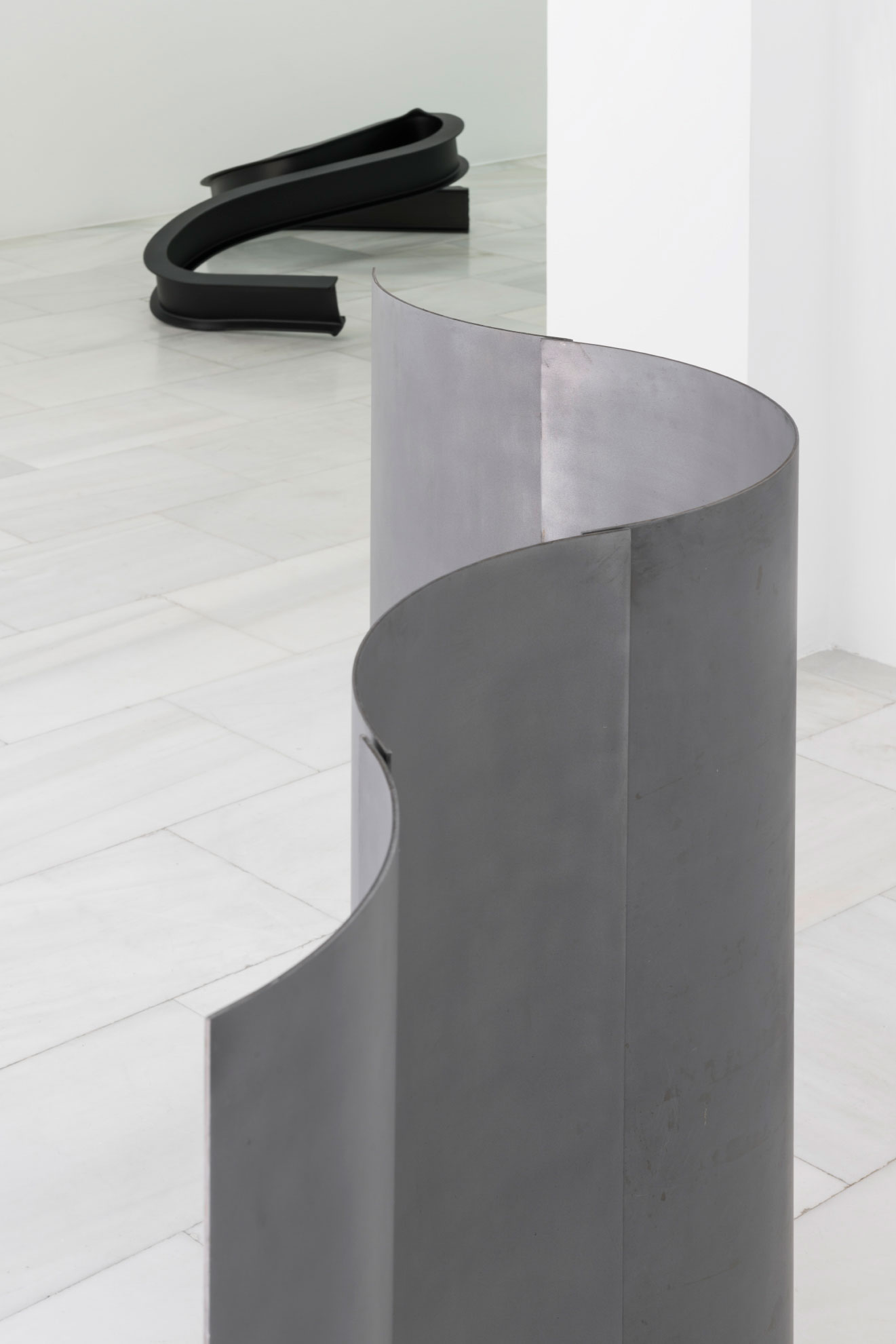
Aery metallic gates, swirling steel beams, meandering copper tubes and contorted handrails demand a bodily and intellectual readjustment in order to be grasped. They have not only ceased to impose their original normative power onto us but have also eluded any interpretative or prescriptive discourse that would “tame” them into circumscribable themes or “grand narratives”. Any criticality or social comment in Rafa Munárriz’s work is not handed on a silver platter, but performed through the physical encounter with such pieces in space. Such an encounter draws upon our previous experiences in the city, and produces a kind of knowledge that inhabits the borders of linguistic communication, creating an intersection between embodied memory, language and action, between thought and physicality, and between material and immaterial immersion. This type of knowledge might not be able to solve problems produced by exclusionary desires, practices and actualities, but perhaps it has the potential to produce an unsettling form of bodily and spatial knowledge that goes beyond that moment of encounter and critically calls into question reality and its perception again, and again, and again.
Espacio Relativo. Rafa Munárriz, Caniche Editorial, Madrid, Spain, 2019. Photos by Roberto Ruiz
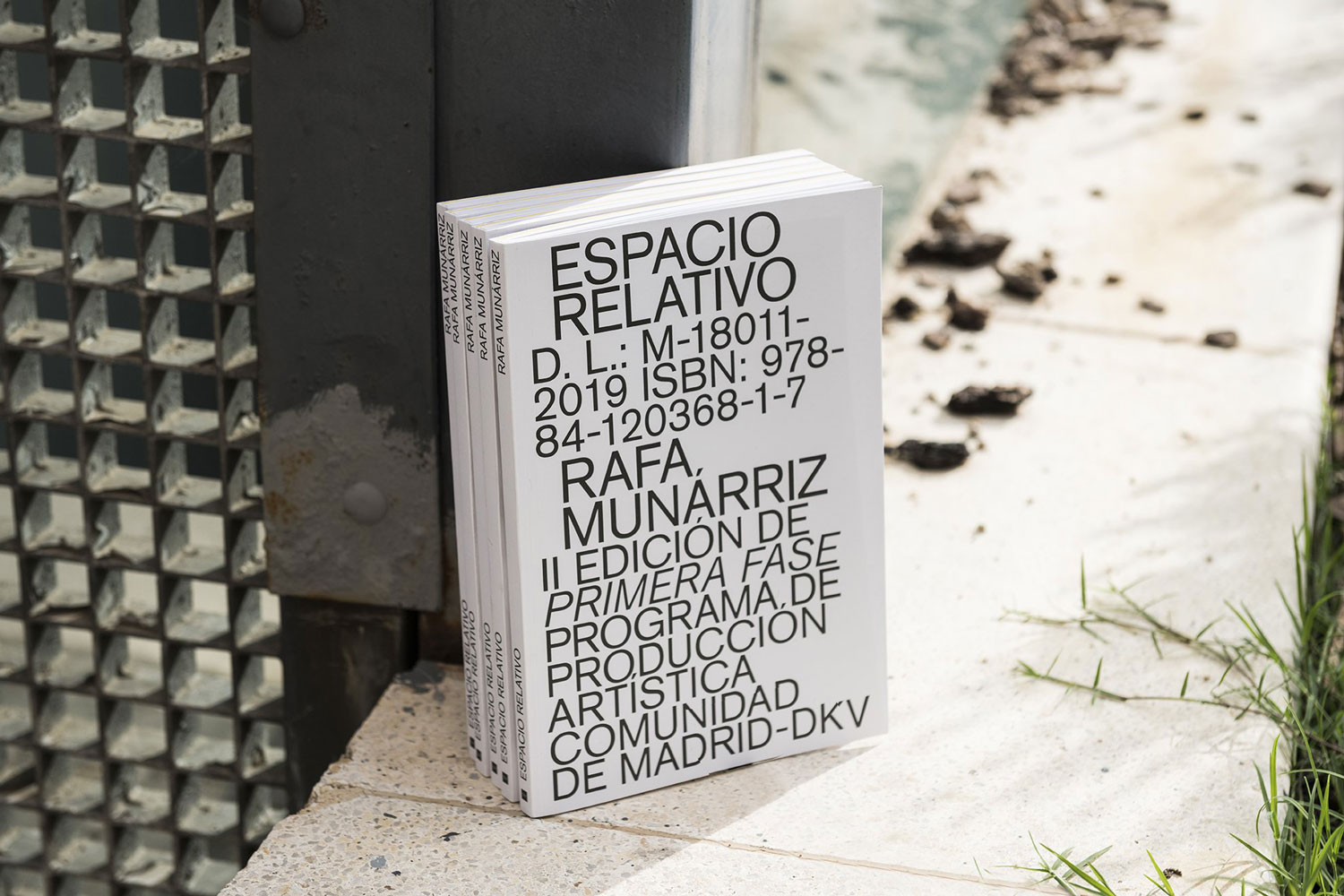
Art is not political because it deals with political matters or represents social and political conflicts, it is political, first and foremost because it reframes the distribution of space, its visibility and habitability.15
Text published in Espacio Relativo. Rafa Munárriz, Caniche Editorial, Madrid, Spain, 2019, p.53-57.
-
Rafa Munárriz, HLCC Series, 2018, pressed IPN140 beams with matt black finish, 45 × 165 × 85 cm.
-
Rafa Munárriz, Práctica XII, 2015, manipulated copper tube (150 × 77 cm / 76 × 62,5 cm / 108 × 120 cm / 121 × 77 cm).
-
Rafa Munárriz, Bloqueo relativo – rotativo, 2018, commercial shutter hanging on a revolving structure, 500 × 500 × 2 cm.
-
Rafa Munárriz, Endless, 2014, installation of manipulated handrails with variable dimensions and compositions.
-
Rafa Munárriz, Conflicto, 2015, Pressed railing, 1m3
-
Paul Basu. “The inbetweenness of things” in: BASU, Paul (ed.), The inbetweenness of things. Materializing mediation and movement between worlds, Bloomsbury Academic, 2017.
-
Patrik Schumacher. The Autopoieses of Architecture, Vol. 2, John Wiley & Sons Ltd, p. 423.
-
Henri Lefebvre. The Production of Space, Oxford: Basil Blackwell, 1991, p. 8.
-
Jane Rendell. Art and Architecture. A Place Between. London/NY: I.B. Tauris, 2006, p. 34.
-
Manuel Castells, 1983, p.4, cited by SOJA, Edward, “The Spatiality of Social Life”, p.115 in GREGORY, Derek & John Urry (eds.) Social Relations and Spatial Structures, Macmillan Press Ltd, London, 1985.
-
Manuel Castells, Crisis, Planning, and the Quality of Life: Managing the New Historical Relationships between Space and Society , 1983
-
Mustafa Dikeç, Space as a mode of political thinking, Geoforum, Elsevier, 2012, p. 675.
-
Flávio Villaça. Reflexões Sobre as Cidades Brasileiras, Studio Nobel, 2012, p. 44.
-
Teresa Caldeira. City of walls. Crime segregation and citizenship in São Paulo, University of California Press, 2001, p.3, 4.
-
Jacques Rancière. Aisthesis, Scenes from the Aesthetic Regime of Art, Verso, 2001